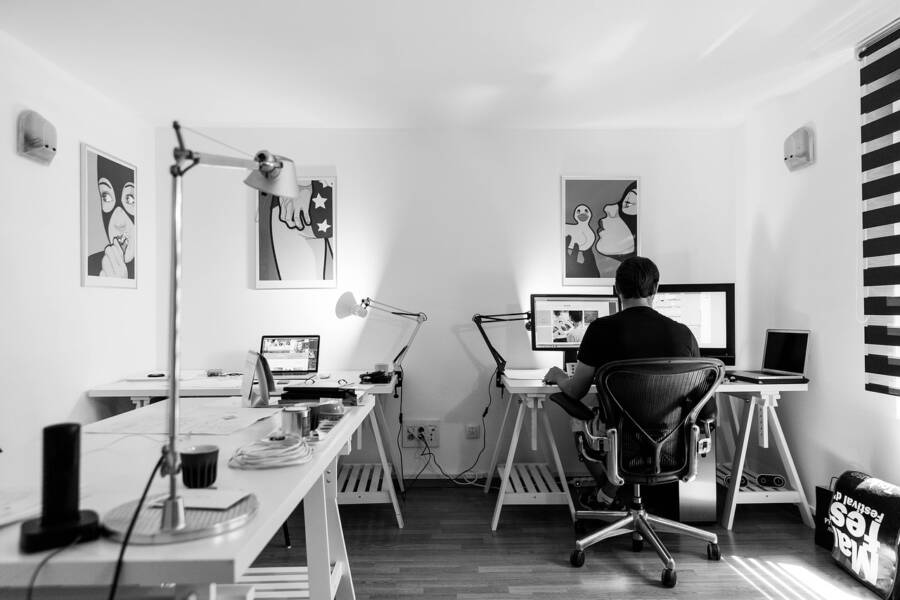Workplaces have seen revolutionary changes in recent years, many of which are improvements over their predecessors. Recently, health and well-being have taken center stage as important design considerations. Since the typical worker would spend more than 90,000 hours in the office during their career, the workplace must adapt swiftly to new aesthetic preferences.

As wellness and collaboration become increasingly popular and technological advancements accelerate, organizations evolve to meet these new demands. Let’s examine upcoming workplace design trends.
Long-Term, Future-Proof Design Principles And Factors
People-centered design is a common thread that runs through many various subjects. More than ever, it’s crucial that companies prioritize employees’ wants and needs when completing office fitouts, and that means going beyond what’s expected of a typical office.
Neurodiversity-Friendly Environments
With greater emphasis being put on providing a neurodiversity-friendly environment, we are more aware of the workspaces that we are in and how these impact our everyday activities, including our working styles. With 17% of the population diagnosed with neurodiversity, including ASD, ADHD, and Dyslexia, we need to create diverse workspaces that bolster inclusivity and cater to all.
It’s all about using flexible and accessible spaces. Everything down to the floorplate layout and color and tones selected were considered to create the perfect environment for all kinds of minds to work in. Elements such as wayfinding and graphics have been selected to ensure all easily understand them.
Color can also help people navigate a building by marking different zones. With varying needs throughout teams and individuals, it’s important to design a functional environment that accommodates everyone.
The office is divided into zones that correspond to people’s preferred levels of stimulation and activity, with warmer, brighter colors denoting collaboration areas and cooler, more muted tones utilized in focus and wellness zones.
Fun and Focus In One Space
After experiencing the convenience of working from home, employees should expect the same luxuries in their offices. Rather than advocating for casual dress on the job, companies are getting creative by providing amenities beyond the traditional desk.
Coffee shop-style break areas with nutritious snacks and peaceful study spaces that encourage focus give workers a range of options to suit their individual needs and work styles. It’s not ordinary for corporations to create on-site cafes complete with baristas.
Modular Furnishings
Enhance your office’s aesthetic with compact, versatile, and custom-designed workplaces that match your company’s needs. It can be rebuilt in a variety of configurations and sizes. Regarding the employer’s bottom line, ergonomic seats are a no-brainer since they guarantee secure, efficient, flexible, and user-friendly workplaces for all employees. Standing tables offer great flexibility.
A modular solution can reduce your storage needs by as much as 70 percent, saving you time, money, and space. Changing the configuration of your cabinets, drawers, and shelves is one way to maximize your available area. Modular storage solutions are safer than conventional options because of their locking features. To top it all off, it hides things, making the space look neater and less congested.
The versatility of carpet tiles, sometimes known as square carpets, makes them a common option for commercial carpeting. When the original wears out after a few years, replacing it with a new one in the same style is simple. They enhance indoor air quality and acoustics and endure a long time.
Integration of Automation
Automatization is being used across all sectors. An automated system can send information from one place to another with little human intervention.
Since smart and interactive digital displays enable more fluid, compelling, and accessible presentations—including the ability to rapidly and effortlessly offer your comments and insights during meetings—they can help organizations enhance meeting efficiency, all while keeping costs down.
Since less wiring is needed, they are much simpler to install. Smart offices can remotely turn lights on or off or modify their brightness via a smartphone app or other smart device. It allows for the drapes and shades to be opened and closed, as well as the conversion of the projector screen to an LED screen. Similarly, energy can be saved by installing motion sensors in hallways and restrooms.
A Biophilic Approach to Interior Design
The concept of “biophilic design” isn’t new. More and more studies, however, are showing the beneficial effects of having natural elements in the workplace. If you don’t have access to outdoor spaces, you can still bring nature indoors. Natural elements, such as stone and wood, are emphasized instead in biophilic design. Water elements and as much natural light as is possible through the office windows are also commonplace in modern workplace decor.
When it comes to biophilic design, the incorporation of plants is crucial. Plants, whether placed on specific workstations or as part of a live plant wall that revitalizes the entire space, can have a significant and beneficial effect on the atmosphere of an office.
There’s evidence that having one around the office can help with concentration, inspiration, and stress management. Because of the versatility of biophilic components like living walls in today’s open layout or other modern office layouts, businesses can benefit from the advantages of integrating plants into their workspace while also fulfilling practical needs like partitioning space or offering a backdrop for videoconferencing.
TechnologyHQ is a platform about business insights, tech, 4IR, digital transformation, AI, Blockchain, Cybersecurity, and social media for businesses.
We manage social media groups with more than 200,000 members with almost 100% engagement.








































